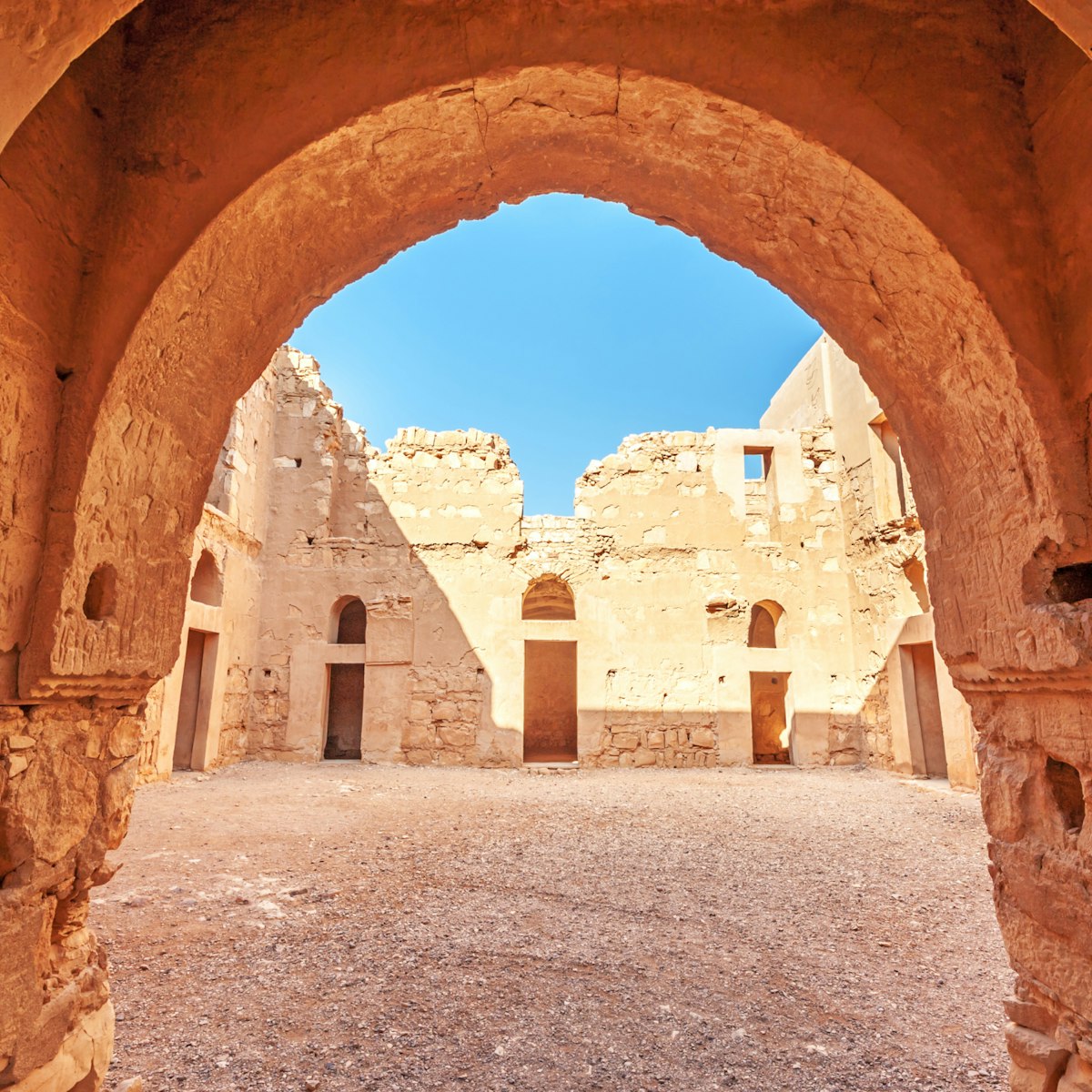One of the best-preserved desert buildings of the Umayyads, the Unesco World Heritage Site of Qusayr Amra is the highlight of a trip into the Eastern Desert. Part of a much greater complex that served as a caravanserai, bathhouse and hunting lodge, the qusayr (little castle) is renowned for its rather risqué 8th-century frescoes of wine, women and wild times.
Walking downhill from the visitor centre towards the modest little structure, it’s hard not to wonder what all the fuss is about. Even entering the main building into the audience hall, where meetings, parties, exhibitions and meals were once held, is decidedly underwhelming as the searing light of the surrounding desert all but obliterates the frescoes within.
But then your eyes grow accustomed to the light, and you are greeted by two bare-breasted women painted on the arches, holding bowls of food (or money) against a blue background, draped in richly detailed cloth. Five centuries before the Early Renaissance in Europe, these frescoes depict a touchingly human quality – wrestlers warm up before the contest, a woman dressed in a mere strip of cloth bathes without coyness in a hinted patch of sunlight, the ear of a gazelle twitches as the herd surges ahead of the hunt, dogs pant as they race across the west wall, driving wild onagers into a trap of nets. Even the mundane construction of the baths is immortalised in the frescoes – in the compartmentalised images on the ceiling, depicting quarrying, moving the stones by camel, carpentry and plastering of the walls.
These are not the normal stylised images of the day, belonging to a religious canon of signs and symbols. Instead they appear to be a unique attempt to capture daily reality – quite unlike the geometric imagery that has come to be associated with early Islamic art.
That’s not to say the frescoes fail to pay homage to more weighty subject matter. Look for the defaced image of the Umayyad caliph, and you’ll see he is surrounded by six great rulers, four of whom have been identified – a Byzantine emperor, Caesar; the Visigoth king, Roderick; the Persian emperor, Chosroes; and the Negus of Abyssinia. The fresco either implies that the Umayyad ruler was their equal or better, or it is simply a pictorial list of Islam’s enemies.
And if the frescoes pay lip service to concerning matters of the day, they also encompass their own mostly forgotten symbolism too. A small doorway leads to the left through the three small rooms that made up the baths. The apodyterium (changing room) has three blackened faces on the ceiling, said to depict the three stages of man’s life. Local Christians believe the central figure to be a depiction of Christ. The left wall has a hallucinogenic painting of an exuberant bear playing the lute, egged on by an applauding monkey, which no doubt would have suggested some political vanity of the day.
In the tepidarium (where warm water was offered and warm air circulated beneath the floor), naked women bathe a child while in the neighbouring hot-water calidarium, which is closest to the furnace outside, a whole Dome of Heaven spirals around the ceiling. This map of the northern hemisphere sky, accompanied by the signs of the zodiac, is among the earliest known attempts to represent the universe on anything other than a flat surface. Centaur-like Sagittarius, the Great Bear and several other zodiac signs (see the map in the visitor centre for details) would have been a fitting ultimate subject of contemplation for contemporary bathers.





